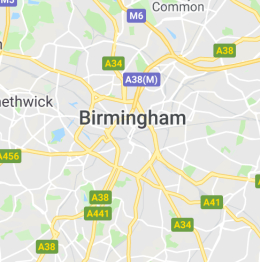As a company enters into an insolvency process, all of its assets are valued and sold, with all of the proceeds being paid out to cover outstanding debts. A company being insolvent means that there isn’t enough money to ensure all creditors are paid in full.
Once a company has entered into a formal insolvency process, creditors have different rights of priority. This is where The Insolvency Experts can help, balancing the needs of the creditors with the assets available to them. These creditors are split into two defined sections: secured creditors and unsecured creditors. We’ll walk you through each of these below.
Call our friendly experts on 03003 038284
By quickly taking back control, we can help you solve the problems that your business has.
What is a secured creditor?
A secured creditor is a lender or creditor that is tied to an insolvent company through a fixed or floating charge over the business’s assets.
They will hold a prior ranking status in terms of collecting debt owed by an insolvent company or individual and will have the priority to claim what is owed above unsecured creditors. A secured creditor will also hold a form of security that is registered over the assets of the company. This security must be registered validly at Companies House.
If a company cannot pay its bills on time and is facing the threat of insolvency, the secured creditor may seek to enforce its rights under the terms of its security. The creditor has a legal right to claim the secured asset to be seized and sold should the borrower default on payments agreed.
Examples of secured creditors
Some common examples of secured creditors include:
- Banks (these are the main source of secured creditors) holding fixed charges on business assets, including property.
- Lenders that hold a charge over any assets held by a company, such as machinery, workplace equipment and the company inventory.
- Invoice Factoring companies that find the company’s sales ledger and hold a fixed charge over the debts the company owes.
Secured creditors can be of various entities, with financial institutions commonly issuing secured loans with the collateral of an asset. A secured creditor may also have provided structured credit products to companies in the form of corporate bonds and syndicated loans.
With any business, credit that can be achieved through a secured loan often provides a good foundation and chance to grow smoothly. It is only when problems arise in a financial sense further down the line, that secured credit could be seen as a problem.
Types of secured creditor
There are two types of secured creditors; those who hold a fixed charge on an asset of the business and those with a floating charge.
- Fixed Charge – An example of a secured creditor with a fixed charge on a specific company asset could be a bank that holds the control over business premises, vehicles, machinery and equipment that has been bought through a secured loan. The other example of this is the Invoice Factoring Company mentioned above, who finds the sales ledger and holds specific security over the debts.
- Floating Charge – In the event of insolvency for a company, the secured creditor with a floating charge will maintain various rights of enforcement, such as the power to appoint an Administrator of the company; although, their security is not over a specific asset. By registering a floating charge, the lender has some security on a loan but not through a specific asset in the same way as a fixed charge.
During the process of insolvency, an Insolvency Practitioner will be in a position to undertake a full analysis and evaluation of all company assets, instructing an independent agent to value all items and property. Then, both secured and unsecured creditors will be contacted and discussions will begin.
What is an unsecured creditor?
Unsecured creditor claims rank after those of secured creditors and preferential creditors (preferential creditors are employees of the company who in most cases, are seeking wage arrears and outstanding holiday pay), but above shareholders of the company.
In many cases of insolvency, the amount received by unsecured creditors will be dependent upon the proceeds achieved from the sale of company assets and the value of secured and preferential creditor claims. Unsecured creditors are heavily involved in the initial discussion around insolvency in order to be formally notified of the financial position of the company and to vote on the Insolvency Practitioner.
Examples of unsecured creditors
The most common examples of the unsecured creditor includes:
- HMRC;
- Contractors;
- Suppliers to the insolvent company;
- Customers.
Further advice on secured creditors
We hope that this guide has helped you to understand a little bit more about secured and unsecured creditors and the various order of payments to creditors in an insolvency scenario.
At The Insolvency Experts, we offer a friendly expert advice service and our team is always available to talk through your specific issues and answer any questions you may have. Over the years we have helped many businesses gain control over their business during troubled times. If you’d like to speak with us we are available via telephone or email, so please contact us today.
Call our friendly experts on 03003 038284
By quickly taking back control, we can help you solve the problems that your business has.

